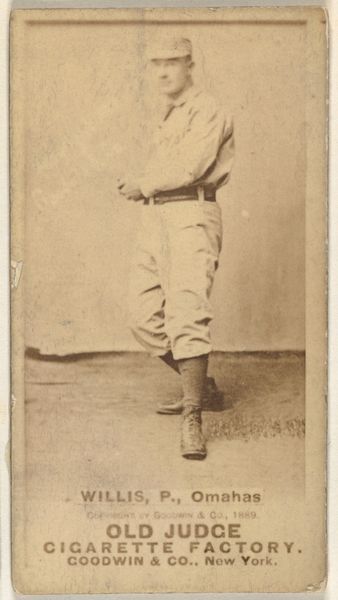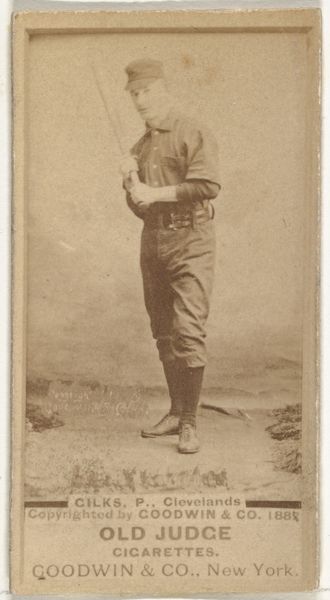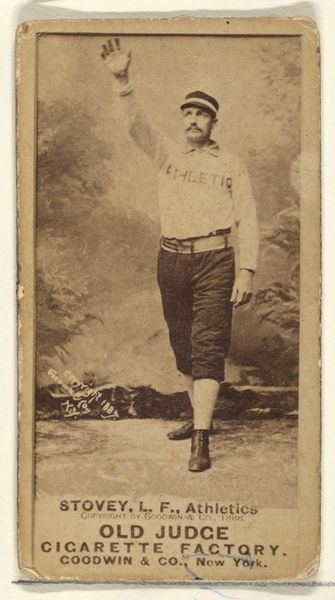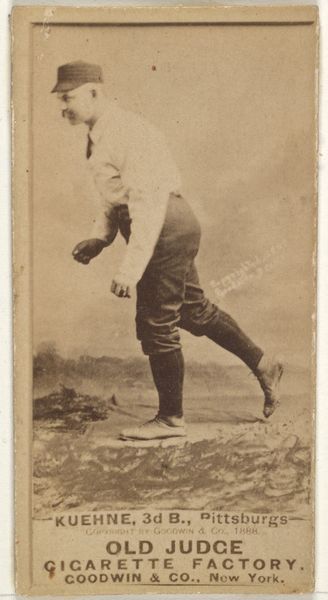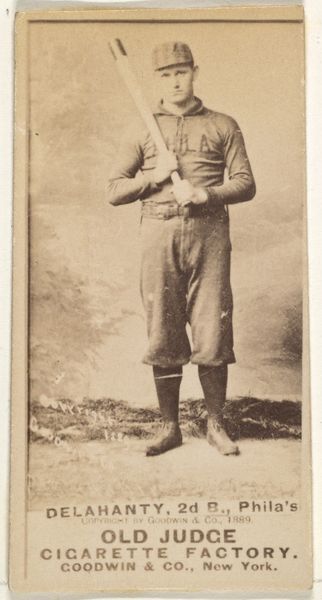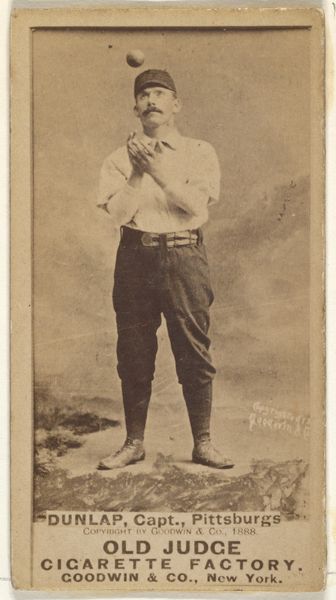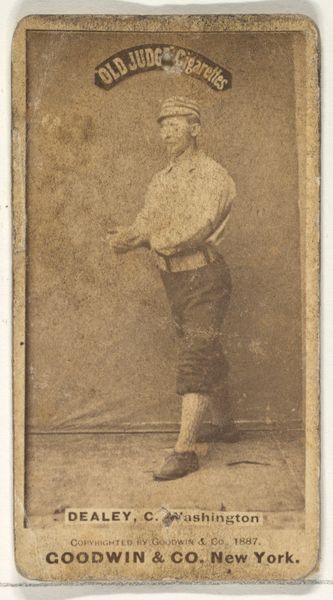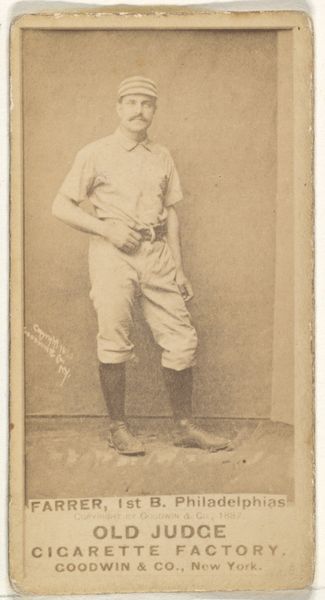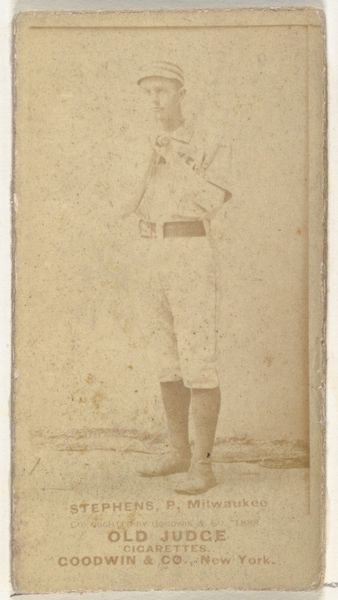
Bill Farmer, Catcher, Pittsburgh, from the Old Judge series (N172) for Old Judge Cigarettes 1887
0:00
0:00
print, photography, albumen-print
#
portrait
# print
#
baseball
#
photography
#
historical photography
#
19th century
#
men
#
athlete
#
albumen-print
Dimensions: sheet: 2 11/16 x 1 3/8 in. (6.9 x 3.5 cm)
Copyright: Public Domain
Editor: This albumen print, titled "Bill Farmer, Catcher, Pittsburgh, from the Old Judge series (N172) for Old Judge Cigarettes," was created by Goodwin & Company in 1887. It's strikingly straightforward, almost stark, in its presentation of the athlete. What layers of meaning might we find beneath this image? Curator: This photograph, part of a series used to market cigarettes, exists at the intersection of early commercialism, the burgeoning cult of celebrity, and a shifting understanding of masculinity. It depicts a white man, and we have to ask what assumptions are embedded in the construction of the all-American baseball player at this historical juncture? Editor: Could you elaborate on those assumptions? Curator: Certainly. The image presents a very specific ideal, consciously or unconsciously excluding other racial and ethnic identities from the narrative of American sport. Who is centered, who is performing masculinity and in what ways is race essential to the imagery here? Think about how these early images helped construct and reinforce cultural ideas about athleticism and national identity. Editor: So, beyond simply documenting a baseball player, this image is participating in a broader cultural conversation about who gets to be seen as an American hero? Curator: Precisely! Consider also that this image circulated as a collectible— a piece of capitalist machinery designed to reinforce gendered cultural categories that were and still are prevalent today. How might a feminist reading challenge the surface narrative of athletic prowess? Editor: It’s unsettling to think about the image existing as propaganda in some ways, but I see your point. It is definitely more complex than a simple portrait. Curator: Exploring those complexities is where true understanding begins. Recognizing the loaded history within these seemingly simple images encourages us to be more critically aware of how visual culture shapes our perceptions even now. Editor: Thanks for that perspective. I’ll definitely be looking at images from the past in a new way going forward!
Comments
No comments
Be the first to comment and join the conversation on the ultimate creative platform.
